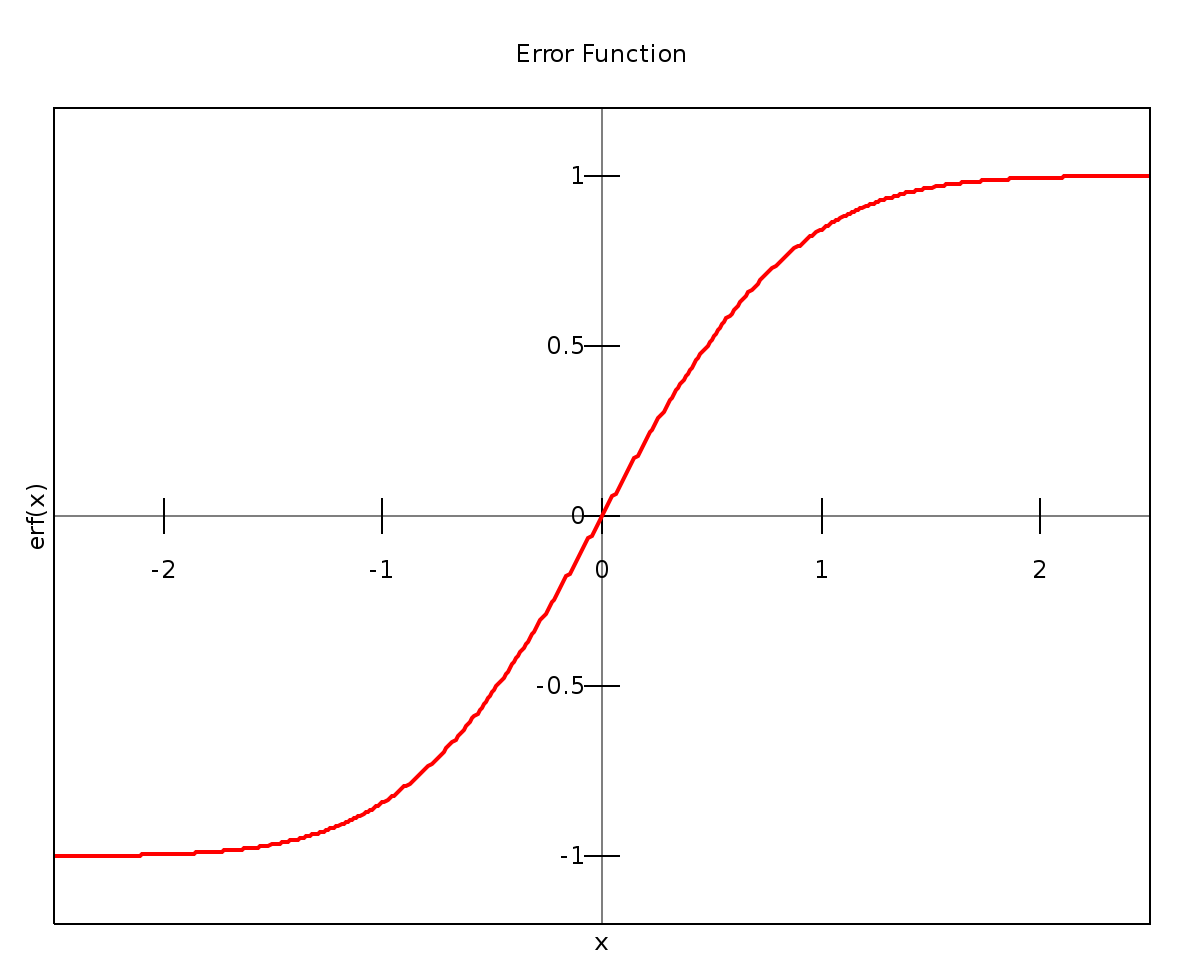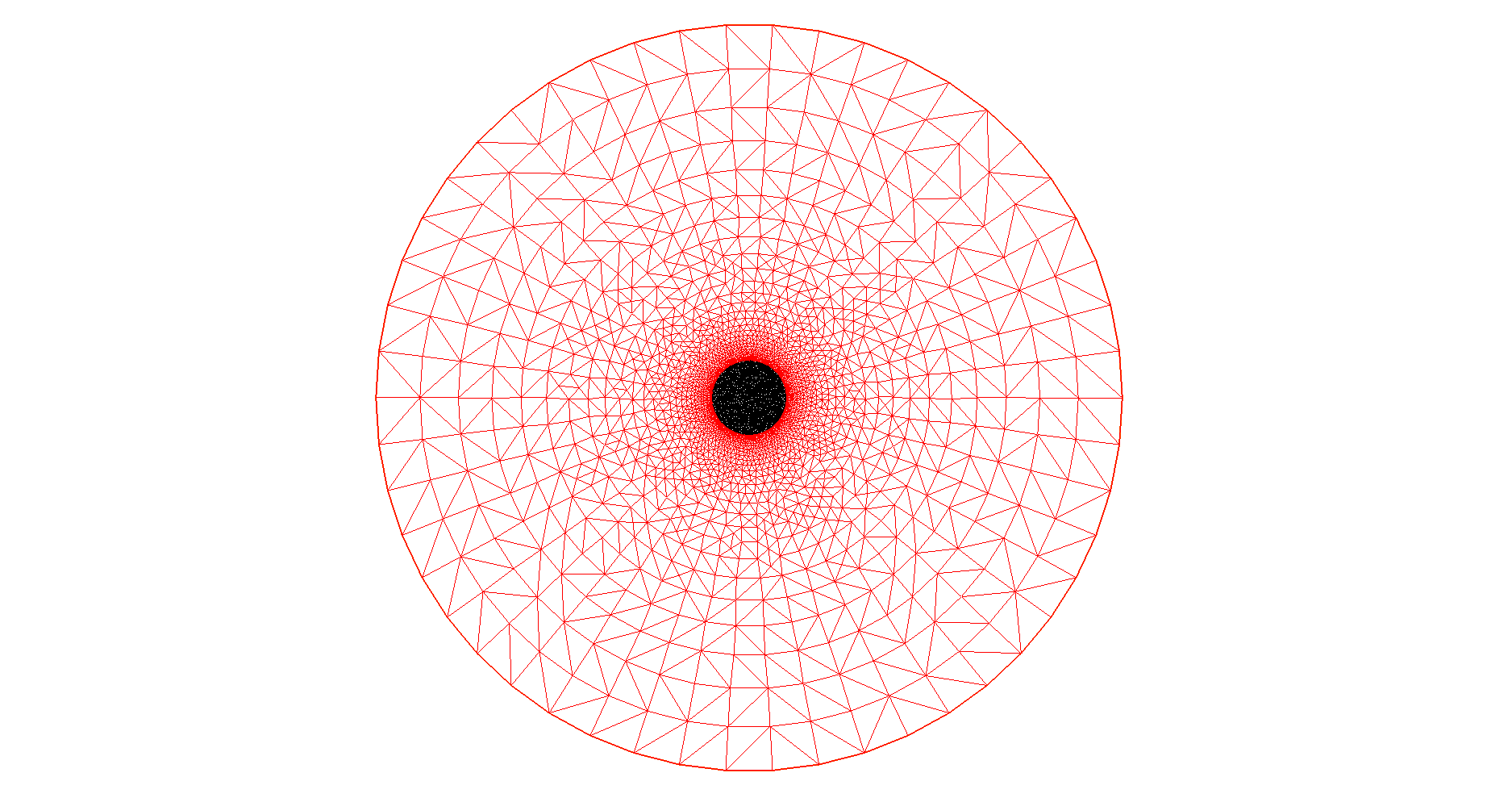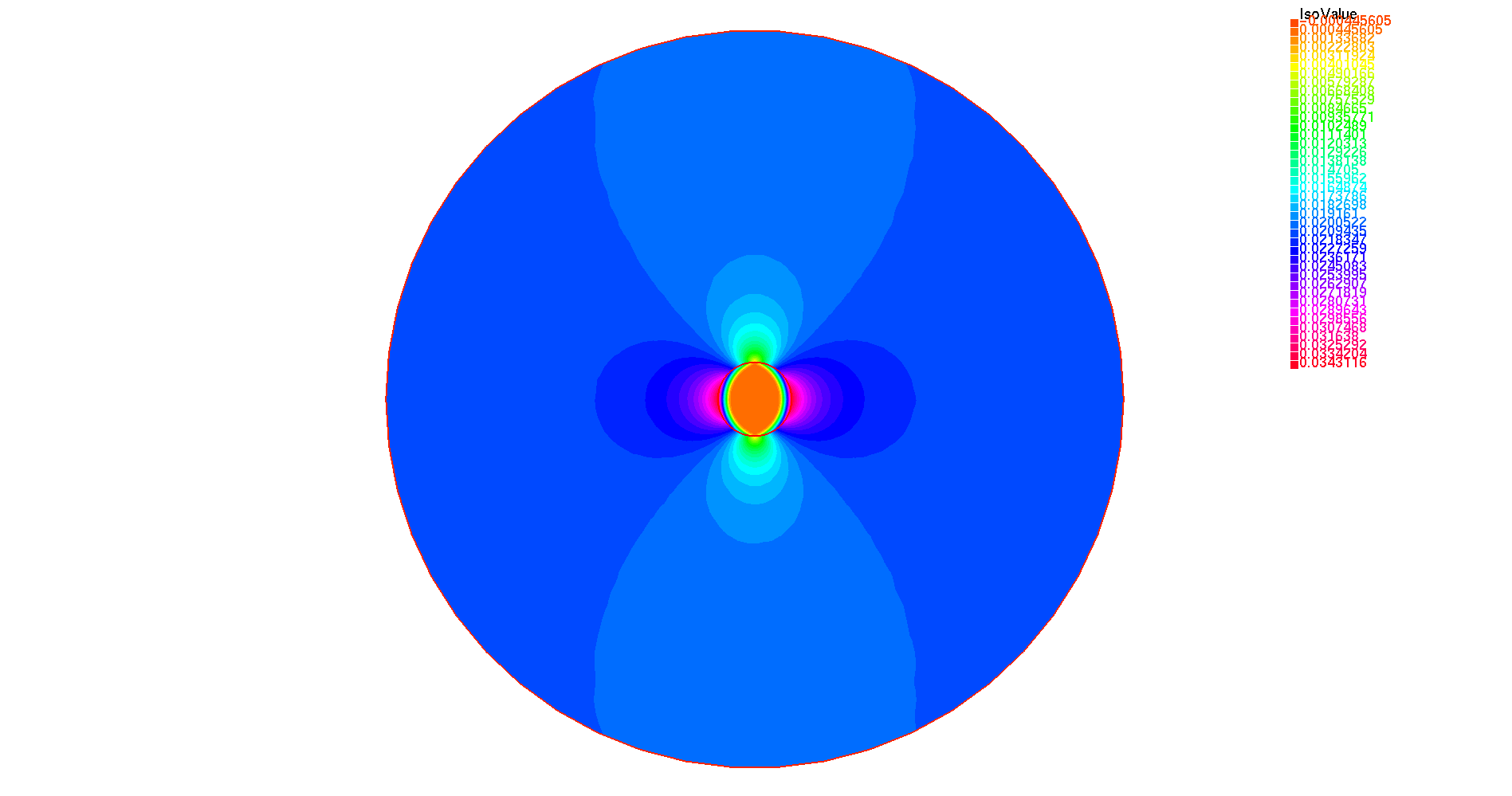Test Case : FreeFEM - Magnetostatic HTS with erf
1. Introduction
This is the test case of High-Temperature Superconductors with the A-V Formulation and Gauge Condition on a bulk cylinder geometry surrounded by air in 2D coordinates corresponding to the paper A numerical model to introduce students to AC loss calculation in superconductors by Francesco Grilli and Enrico Rizzo.
3. Data Files
The case data files are available in Github here :
-
EDP file - Edit the file
4. Equation
With :
-
\(A_{z}\) : \(z\) component of potential magnetic field
-
\(J=J_c \text{erf}\left(\frac{-A_z}{A_r}\right)\) : current density \(A/m^2\)
-
\(\mu\) : electric permeability \(kg/A^2/S^2\)
5. Geometry
The geometry is a circle in 2D coordinates \((x,y)\) representing a bulk cylinder, surrounded by air.

Geometry
|
The geometrical domains are :
-
Conductor: the cylinder -
Air: the air surroundingConductor-
Infty: theAir's boundary
-
Symbol |
Description |
value |
unit |
\(R\) |
radius of cylinder |
\(0.001\) |
m |
\(R_{inf}\) |
radius of infty border |
\(0.01\) |
m |
6. Parameters
The parameters of the problem are :
-
On
Conductor:
Symbol |
Description |
Value |
Unit |
\(\mu=\mu_0\) |
magnetic permeability of vacuum |
\(4\pi.10^{-7}\) |
\(kg \, m / A^2 / S^2\) |
\(A_r\) |
parameter resulting from the combination of \(E_0\) and the time it takes to reach the peak of AC excitation |
\(1.10^{-7}\) |
\(Wb/m\) |
\(b_{ext}\) |
external applied field |
\(0.02\) |
\(T\) |
\(J_c\) |
critical current density |
\(1.10^8\) |
\(A/m^2\) |
The error function erf is directly implemented on FreeFEM :

|
-
On
Air:
Symbol |
Description |
Value |
Unit |
\(\mu=\mu_0\) |
magnetic permeability of vacuum |
\(4\pi.10^{-7}\) |
\(kg \, m / A^2 / S^2\) |
On EDP file, the parameters are written :
// Applied field, in tesla
real Bext=0.02, theta=0;
// Coefficients
real Jc=1e8, Ar=1e-7, mu=4e-7*pi;
7. Boundary Conditions
For the Dirichlet boundary conditions, we want to impose the applied magnetic field :
We have \(B_{ext}=0.02 T\), and in 2D Cartesian coordinates, \(B=\nabla\times A\) becomes \(B_x=\partial A/\partial y\) and \(B_y=-\partial A/\partial x\). So in order to obtain a magnetic field \(B_{ext}\) along \(y\), it is sufficient to impose \(A_z=-xB_{ext}\).
Finally we have :
-
On
Infty: \(A = -x B_{ext}\)
On the EDP file, the boundary conditions are written :
// Boundary conditions
func bc=Bext*(-x);
8. Weak Formulation
9. Implementation of the Weak Formulation
On FreeFEM, we need to implement the Weak Formulation. The bilinear form was formulated as a non-linear problem, which in FreeFEM++ requires the source term to be multiplied by the unknown A. Hence, for the sake of consistency with the model, the source term is written as a reaction coefficient and multiplied by the term \((1/A)\).
On the EDP file, the weak formulation is written :
// Finite element space and problem definition
fespace Vh(Th,P2); // Fespace defined over the triangulation Th, with 2nd order polynomials as test function
Vh u,uu=1,ue=1,v; // u --> unknown
// uu --> variable for the non linear function
// ue --> variable to store the solution of the (i-1)th iteration
// v --> test function
Vh fd=1*(region==sc) + 0*(region==air); // Dependence upon the region (i.e. air or conductor) defined within the fespace
macro Grad(u)[dx(u),dy(u)]// // Macro for bilinear form in array-format
// Non linear function
macro F(h) (mu*Jc*fd*erf(-h/Ar))/h// // Macro for the nonlinear function (only on conductor)
// Problem definition
problem Aform(u,v) = int2d(Th)(Grad(u)'*Grad(v)) // on air & conductor
- int2d(Th)(u*F(uu)*v) // on conductor
+ on(D,u=bc); // Dirichlet boundary condition
10. Mesh & Solver
-
Mesh

Mesh of Geometry
|
-
Non-linear Solver : Picard
while (abs(err)>=toll) {
Aform;
uu=u; // Set the argument of the non linear function
err=(abs(u(0,0)-ue(0,0)))/(u(0,0)); // Residuals evaluation/ convergence at (x,y)=(0,0)
cout<<"Convergence at (x,y)=(0,0), err:"<< err << endl; // Plot error
Residuals<<" "<< i <<" "<< err <<endl;
ue=u; // Value update
i++;
}
11. Results
11.1. Electric current density
The electric current density \(J\) is defined by :

Figure 1. "Electric current density \(J (A/m^2)\)
|
The behaviour of \(J\) on the \(O_r\) axis, on the diameter of the cylinder, for a maximum applied field of 0.02 T is :
11.2. Magnetic flux density
The magnetic flux density \(B\) is defined by:
Therefore, \(B_y\), the y-component of the magnetic flux density is defined as \(-\partial_x A\) :

Figure 2. "y-component of the magnetic flux density \(B_y (T)\)
|